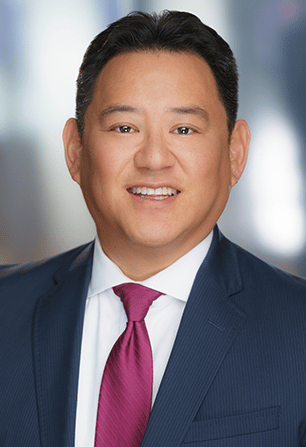A recent study by The Insurance Research Council found that approximately 15% of all drivers in California are uninsured.
That’s a lot, but many motorists can’t afford to insure their vehicles without major economic improvement.
This has become an epidemic in Los Angeles and the country. There’s a direct correlation between the percentage of individuals who carry auto insurance and the financial strength of the U.S. economy.
Higher levels of prosperity in the U.S. in the mid-2000s spurred a steady drop in uninsured motorist rates. Since 2008, rates have still risen incrementally.
The DMV recommends that drivers get uninsured driver insurance from their insurance carrier and penalizes motorists without auto insurance.
If you’ve been involved in an accident with an uninsured driver, you have little to no recourse. You can try to sue that person, but you probably won’t get anything because if they can’t afford to pay their insurance, they probably don’t have enough assets to make a lawsuit fruitful.
This is why having at least uninsured driver insurance is so important.
Facing a car accident without insurance in Los Angeles can lead to fines, penalties, and legal repercussions. Consult a car accident lawyer for guidance.
Types of Uninsured Motorist Coverage
Uninsured motorist coverage protects you financially if you’re involved in an accident with a driver who doesn’t have insurance.
There are two main types of uninsured motorist coverage: Uninsured Motorist Bodily Injury (UMBI) and Uninsured Motorist Property Damage (UMPD).
Uninsured Motorist Bodily Injury (UMBI)
Coverage that pays for medical expenses, lost wages, and pain and suffering if you or your passengers are injured in an accident caused by an uninsured driver.
It applies if you’re a pedestrian struck by an uninsured motorist or hit in your vehicle by a hit-and-run driver. In California, the minimum UMBI coverage is $15,000 per person and $30,000 per accident, but higher limits are available.
Uninsured Motorist Property Damage (UMPD)
Coverage that pays for repairs to damage from an accident caused by an uninsured driver. UMPD coverage is only available in California if authorities identify the uninsured driver.
The maximum UMPD coverage in California is $3,500 and is subject to a deductible.
Underinsured Motorist Coverage (UIM)
California is one of a few states offering Underinsured Motorist Coverage (UIM). This coverage kicks in when the at-fault driver has insurance but not enough to cover all your damages.
UIM coverage pays the difference between the at-fault driver’s insurance and your UIM limits.
Consider your individual needs and budget when choosing uninsured motorist coverage. While the minimum coverage limits may be tempting, they may not fully protect you in the event of a serious accident.
The DMV recommends carrying uninsured motorist coverage limits that match your liability coverage limits.
The Impact of Uninsured Motorists in Los Angeles
The high proportion of uninsured drivers in California significantly impacts auto insurance costs, affecting insured drivers in multiple ways.
Uninsured drivers cause approximately one in eight accidents nationwide, with California’s uninsured driver rate estimated at 15%, higher than many other states.
When an insured driver is involved in an accident caused by an uninsured motorist, they must file a claim with their insurance company, potentially leading to increased premiums and out-of-pocket expenses like deductibles.
Uninsured motorist coverage is also more expensive in California due to the elevated risk of accidents with uninsured drivers.
Insurance companies must adjust their premiums to account for this risk, resulting in higher overall auto insurance costs for all insured drivers in the state.
Several factors contribute to California’s high uninsured driver rate, including the inability to afford insurance premiums and the belief that driving without insurance won’t result in consequences.
California’s substantial uninsured driver population directly impacts insured drivers by increasing the likelihood of accidents with uninsured motorists. This leads to higher claims payouts, elevated premiums, and additional out-of-pocket expenses.
Penalties for Uninsured Motorists
California actively imposes strict penalties on uninsured drivers to discourage the practice and protect insured motorists. The state charges fines ranging from $100 to $200 for a first offense, with total costs reaching around $450 after fees.
If a driver commits subsequent offenses within three years, they face fines from $200 to $500, amounting to over $1,000 with fees.
Law enforcement may impound vehicles of uninsured drivers, forcing them to pay towing and storage fees. The DMV actively suspends licenses of uninsured drivers involved in accidents until they provide proof of insurance and pay reinstatement fees of $100 to $500.
Uninsured drivers who cause accidents bear personal liability for damages and injuries.
Insured drivers file claims with their insurance, which may pursue legal action against the uninsured driver, leading to wage garnishment, property liens, or bankruptcy.
California uses the Statewide Insurance Verification System (SIVS) to verify vehicle insurance status electronically.
How Does the SIVS Work?
The Statewide Insurance Verification System compares vehicle registration data from the Department of Motor Vehicles (DMV) with insurance policy information provided by licensed auto insurance companies operating in the state.
Here’s how it works:
1. Insurance companies regularly submit policy information to SIVS, including the policyholder’s name, vehicle information, and policy effective dates.
2. When a vehicle is registered or renewed, the DMV provides the vehicle and owner information to SIVS.
3. SIVS compares the DMV data with the insurance policy information to verify that the vehicle is insured.
4. If SIVS cannot confirm valid insurance coverage for a vehicle, it flags the vehicle as potentially uninsured.
5. The DMV then sends a notice to the vehicle owner requiring them to provide proof of insurance within a specified timeframe, typically 30 days.
6. If the vehicle owner fails to provide proof of insurance, the DMV may suspend the vehicle’s registration until the owner provides evidence of insurance and pays any necessary reinstatement fees.
7. Law enforcement agencies can also access SIVS data, allowing them to quickly verify a vehicle’s insurance status during traffic stops or accidents.
The SIVS system helps California identify and address the issue of uninsured vehicles more efficiently by automating the insurance verification process.
This enables the state to act against uninsured drivers more quickly and consistently, ultimately reducing the number of uninsured vehicles on the road and protecting insured motorists from the financial consequences of accidents involving uninsured drivers.
California Low-Cost Auto Insurance Program (CLCA)
The CLCA program provides affordable, basic liability insurance to eligible low-income drivers.
To qualify for the program, applicants must:
- Have a valid California driver’s license
- Own a vehicle valued at $25,000 or less
- Meet income eligibility requirements (e.g., annual income not exceeding 250% of the federal poverty level)
- Be at least 19 years old
- Have a good driving record
The CLCA program offers policies with the state’s minimum required liability coverage of $10,000 per person for bodily injury, $20,000 per accident for bodily injury, and $3,000 for property damage (10/20/3).
These limits are lower than the standard minimum requirements, making the policies more affordable. The program’s premiums vary by county but are generally much lower than traditional auto insurance policies.
California has also implemented other initiatives to reduce the number of uninsured drivers:
- Educational campaigns: The state has launched public awareness campaigns to educate drivers about the importance of auto insurance and the consequences of driving uninsured.
- Payment plans: Some insurance companies offer payment plans to help make insurance premiums more manageable for low-income drivers.
- Community-based organizations: Some non-profit organizations work to promote access to affordable auto insurance and help low-income drivers navigate the insurance system.
Check with an experienced car accident law firm for the most relevant information about Los Angeles uninsured driver laws and information.
How Can an Uninsured Motorist Lawyer in Los Angeles Help?

If an uninsured driver hits you in California, a lawyer will:
- Evaluate your case by reviewing police reports, witness statements, and medical records.
- Identify potential compensation sources, such as uninsured motorist coverage, PIP coverage, or third-party claims.
- Negotiate with insurance companies to maximize your compensation.
- If necessary, file a lawsuit against the uninsured driver or other liable parties.
- Prove the uninsured driver’s liability and the extent of your damages.
- Advise you on seeking appropriate medical treatment and ensure proper documentation.
- Provide professional guidance and support throughout the process.
Insurance companies minimize their financial exposure, so it’s crucial to have a lawyer advocate for your rights.
Pursuing a claim or lawsuit against an uninsured driver is complex and time-consuming. A California auto accident lawyer familiar with laws and uninsured motorist cases streamlines the process, helps avoid mistakes, and increases your chances of a favorable outcome.
They can identify compensation sources, negotiate with insurers, file lawsuits, prove liability and damages, ensure proper medical documentation, and provide professional guidance.
With a skilled lawyer, you can focus on recovery while they secure the compensation you deserve.
How to Find the Best Car Insurance Rates in Los Angeles
To find the best car insurance rates in California, consider the following tips:
Shop around
Compare quotes from multiple insurance providers to find the most competitive rates. Use online comparison tools or work with an independent insurance agent to gather quotes efficiently.
Understand your coverage needs
Assess your circumstances, including your vehicle’s value, driving habits, and assets, to determine the appropriate level of coverage. Don’t simply opt for the cheapest policy without considering your specific needs.
Increase your deductible
Choosing a higher deductible can lower your monthly premiums. Just ensure you can pay the deductible in case of an accident.
Bundle your policies
Many insurers offer discounts for bundling your auto insurance with other policies, such as homeowners or renter’s insurance.
Maintain a good driving record
Safe drivers with no accidents or traffic violations typically qualify for lower rates. Avoid distractions, follow traffic laws, and take a defensive driving course to improve your skills and potentially earn a discount.
Consider your car’s make and model
Insurance rates vary based on your vehicle’s make, model, and age. Generally, safer, less expensive, and less commonly stolen cars cost less to insure.
Explore discounts
Insurers offer various discounts, such as those for low mileage, safety features like anti-lock brakes or airbags, or membership in specific professional organizations.
Maintain good credit
In California, insurers can use your credit history to determine your rates. Maintain a good credit score by paying bills on time and keeping credit balances low.
Review your policy annually
Life changes like getting married, moving, or buying a new car can affect your insurance needs and rates.
Consider usage-based insurance
Some insurers offer programs that track your driving habits using telematics devices. If you’re a safe driver, you may qualify for lower rates based on your driving behavior.
While finding the lowest price is on everyone’s mind, keeping enough coverage is crucial. You don’t want to find yourself with inferior coverage in case of a devastating accident with an uninsured motorist.
The bottom line is that if you’re in an accident with an uninsured driver, you’re going to need some help to get your life back together, especially if you’re injured. Ensure you’re adequately covered to protect yourself from those who aren’t. Contact a personal injury attorney to guide you through the process and fight for the compensation you deserve.











